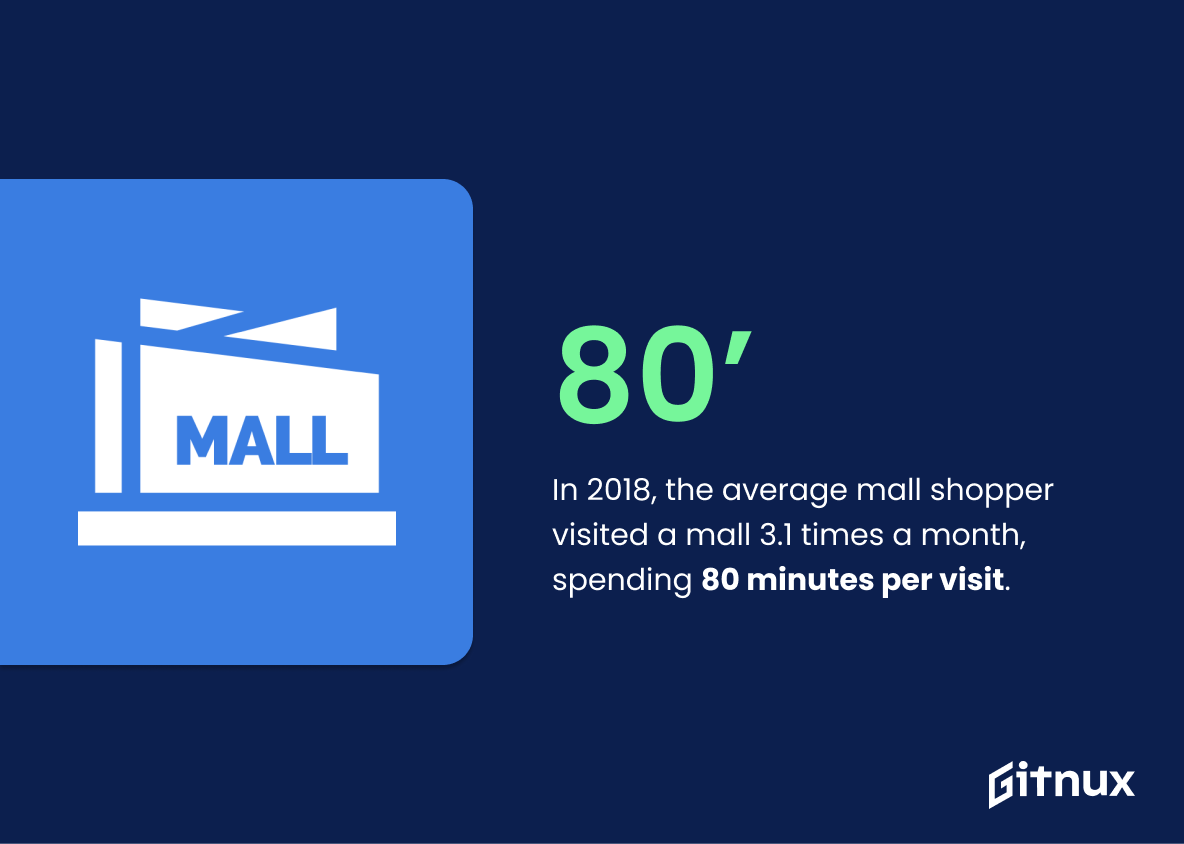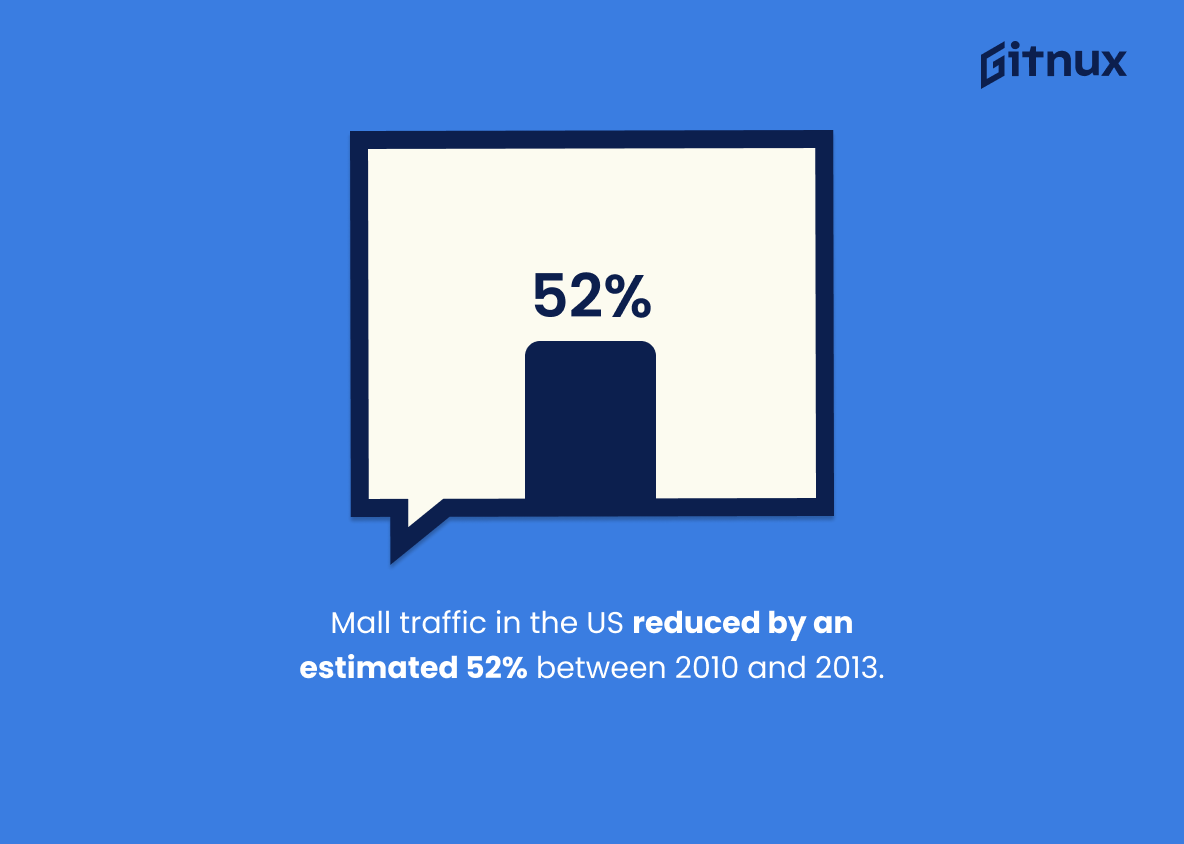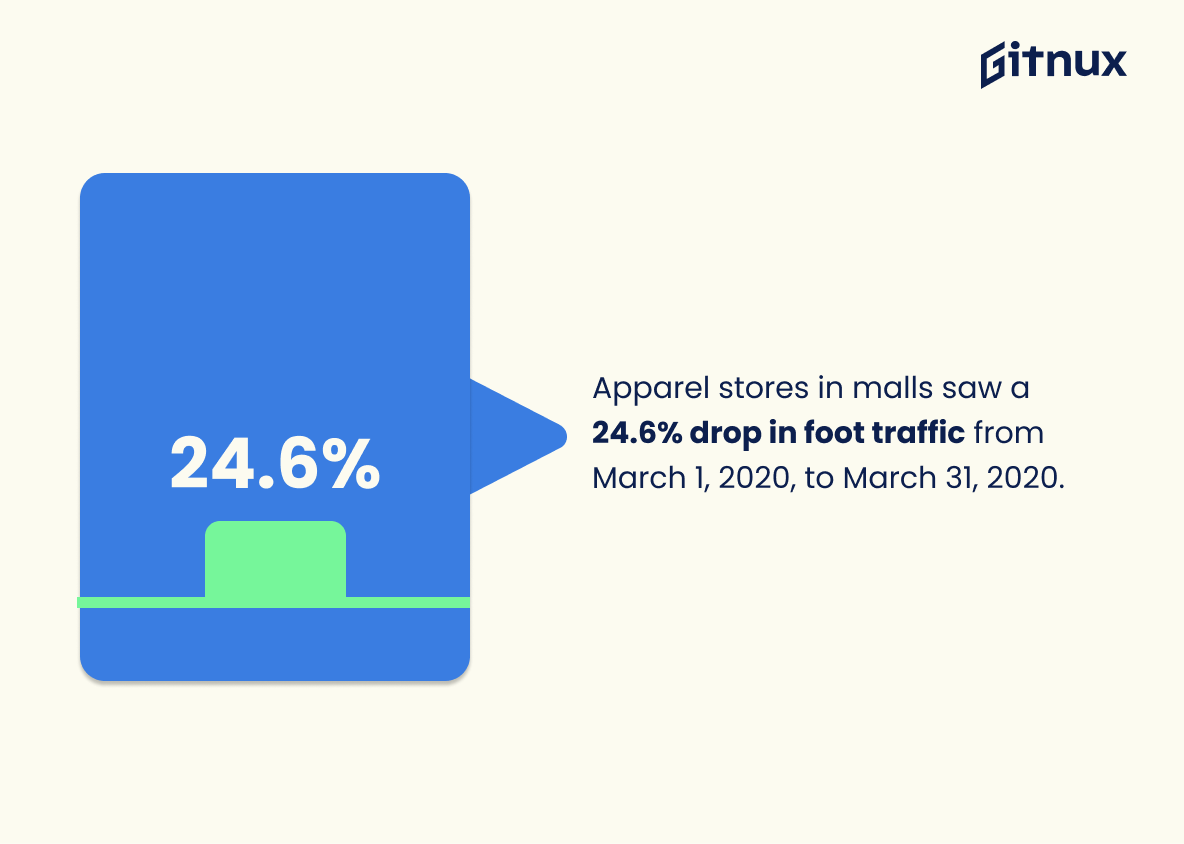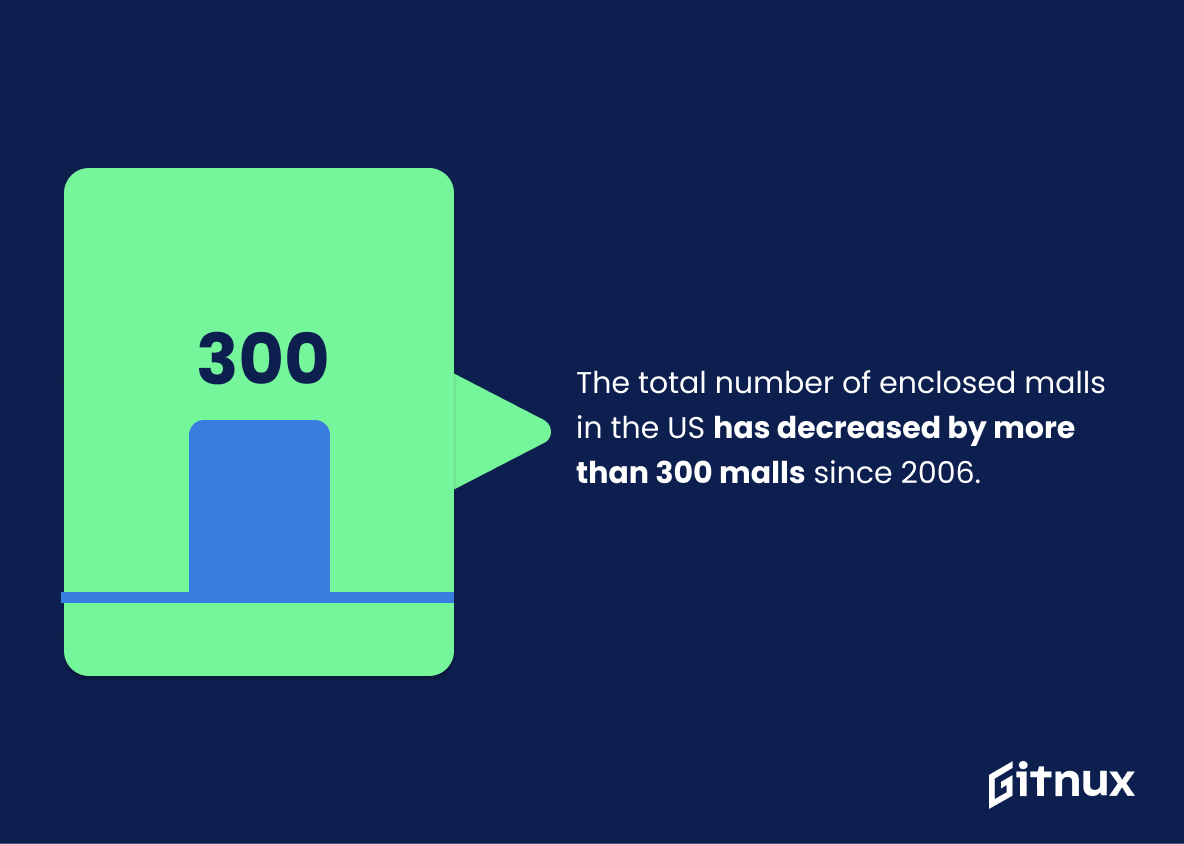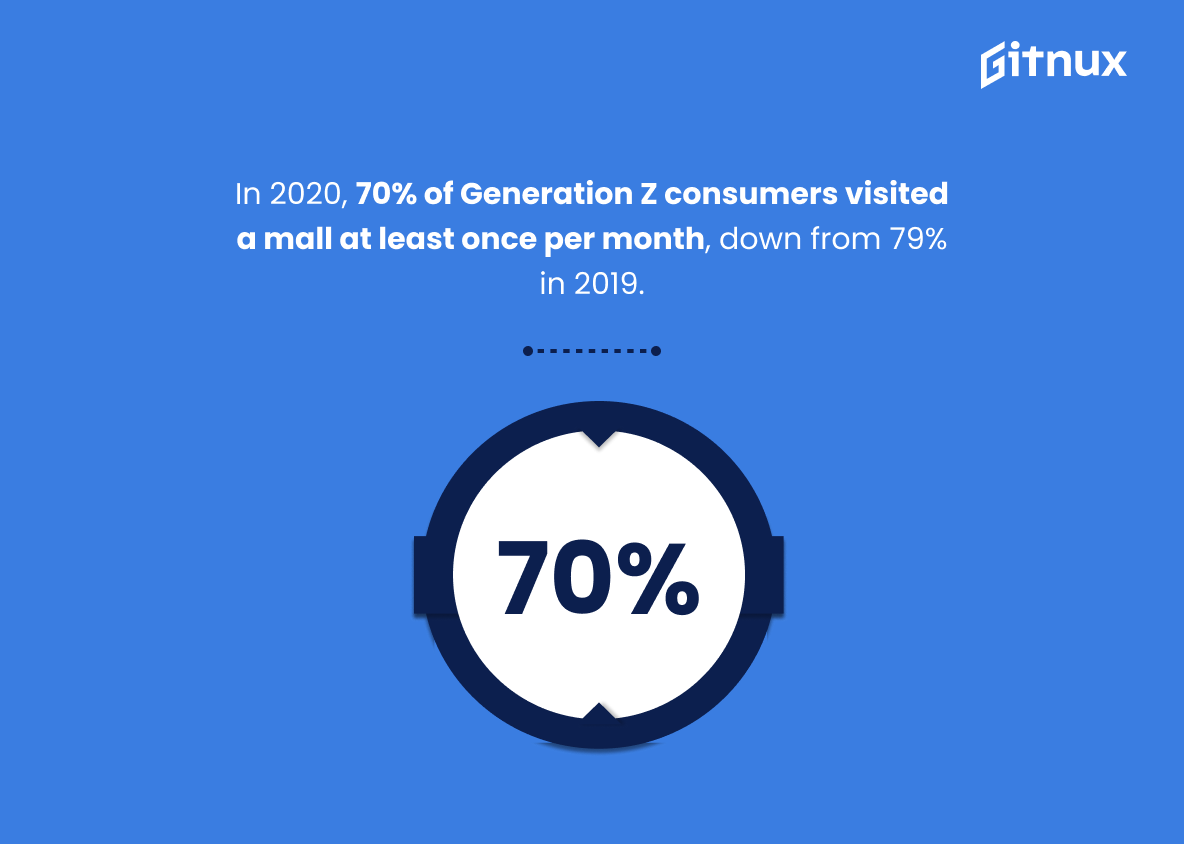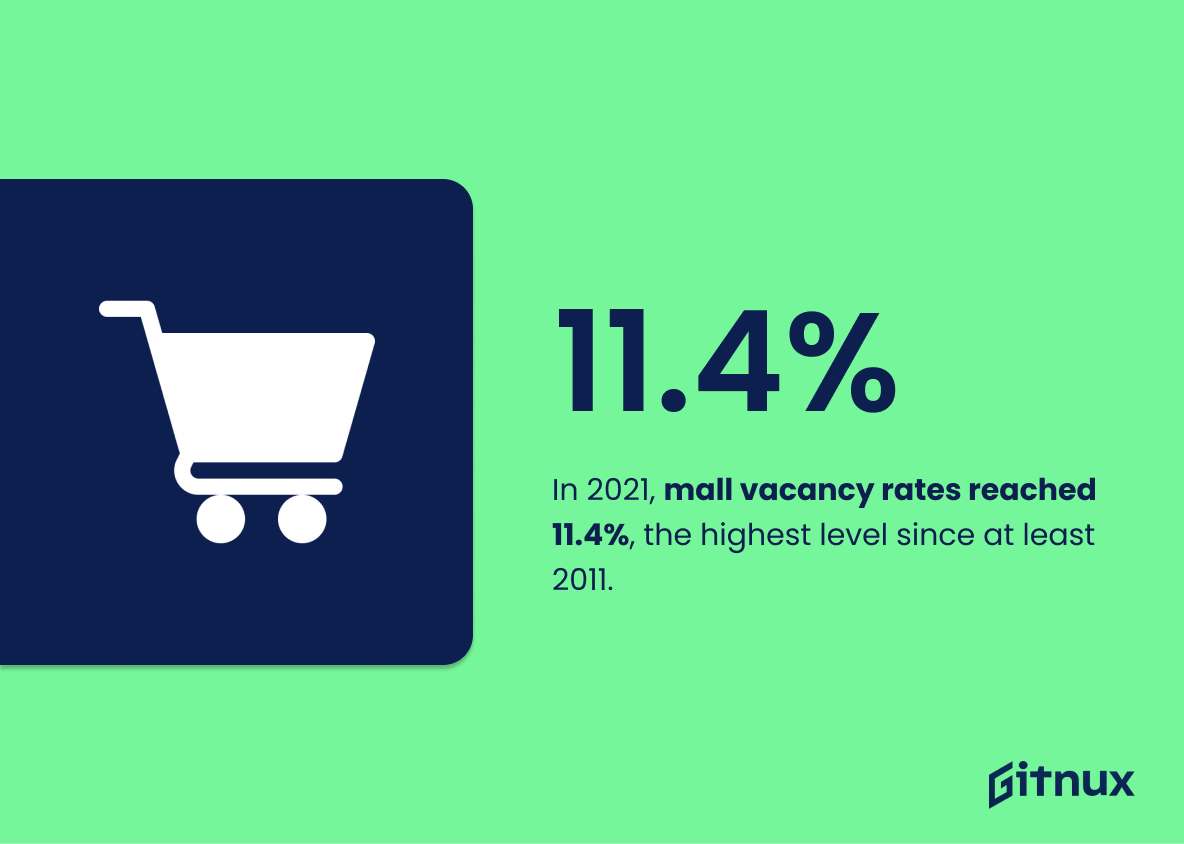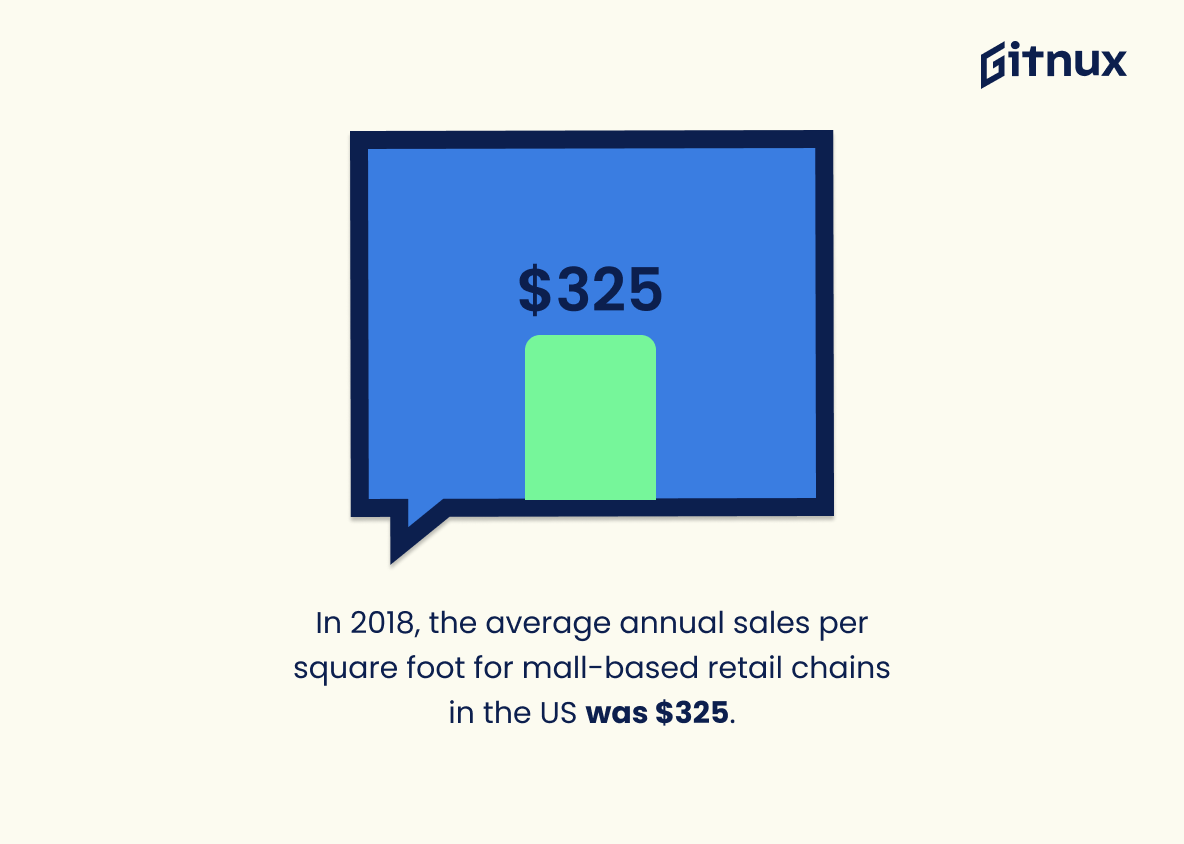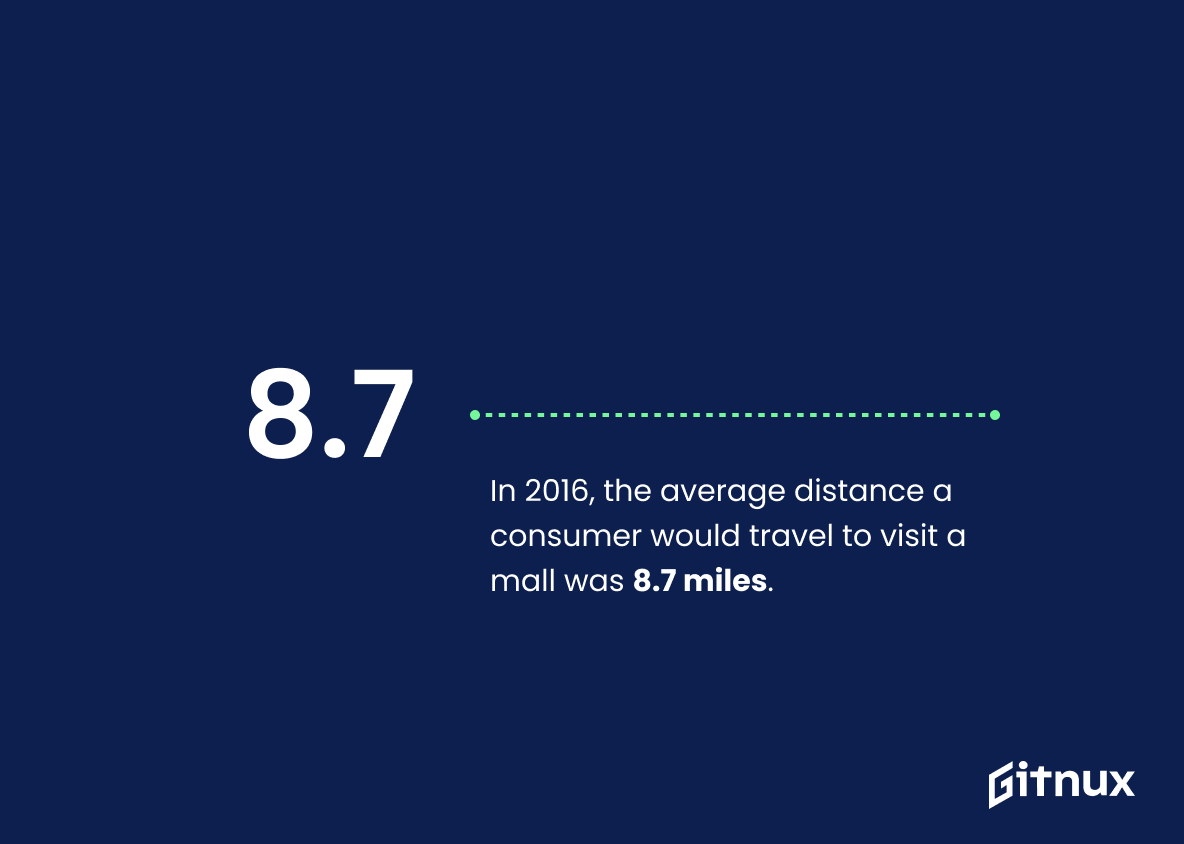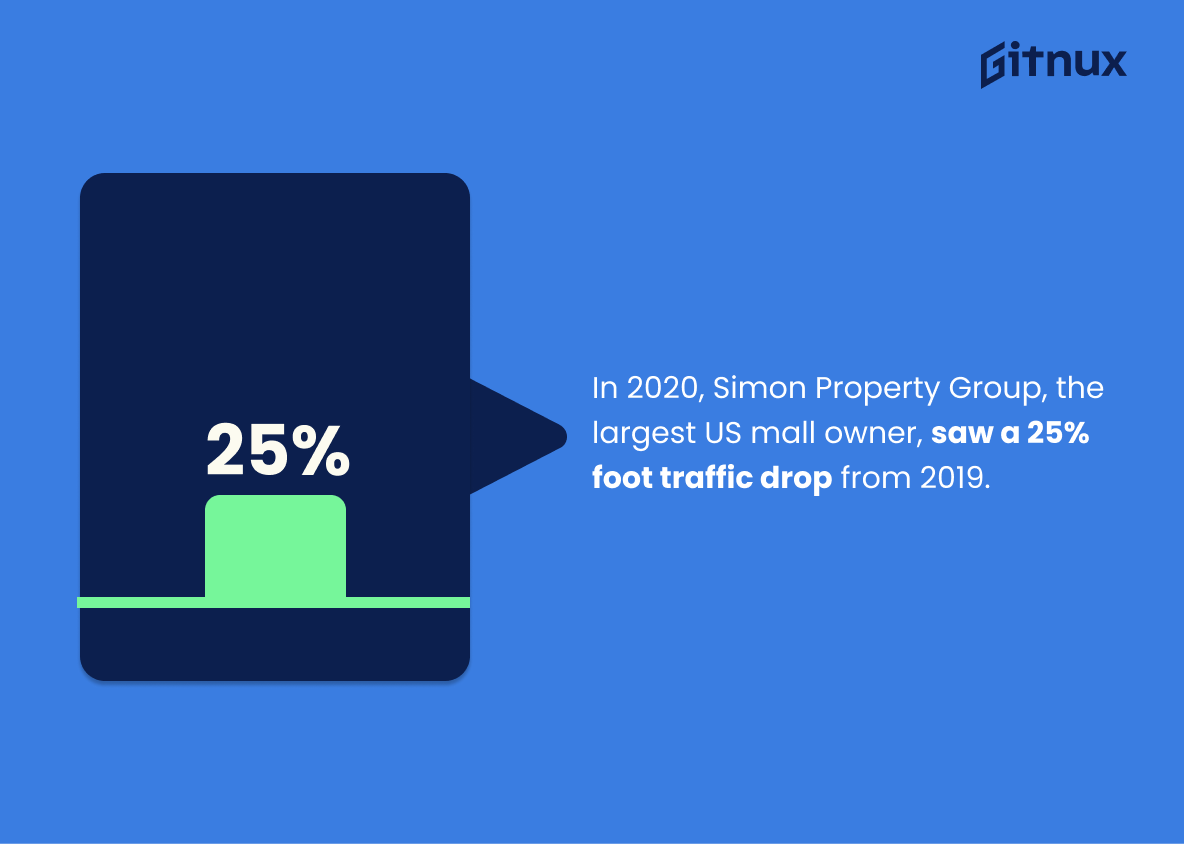In this market data report, we delve into the fluctuating trends of mall traffic from the nostalgic peaks of the 1950s to the tangible shifts observed in recent years. Despite historical popularity, 2021 witnessed a 28.3% decrease in in-mall store traffic compared to 2019, while June 2021 rebounded with an 86% surge compared to the same period in 2020.
Noteworthy, the 2020 holiday season experienced approximately 33% less foot traffic than its 2019 counterpart, with specific dips in apparel stores. Contrastingly, 2017 spotlighted 10% of top-performing malls attracting 72% of total visits, and intriguingly, non-retail tenants have seemingly bolstered visitor numbers in enclosed malls. Black Friday and annual sales per square foot have also navigated through shifting patterns, all while vacancy rates and conversion rates spotlight further areas of exploration into contemporary mall viability and consumer behavior.
Let’s navigate through the corridors of these statistics to understand the evolving dynamics of mall traffic and shopper behavior.
This statistic is a stark reminder of the impact the pandemic has had on mall traffic. It highlights the significant decline in foot traffic in malls since 2019, demonstrating the need for malls to adjust their strategies to remain competitive in the current climate.
As of June 2021, mall foot traffic increased by 86% compared to the same period in 2020.
This statistic is a powerful indicator of the success of malls in the face of the pandemic. It shows that despite the challenges of the past year, malls have been able to attract customers and increase their foot traffic. This is a testament to the resilience of the mall industry and the importance of malls in our society.
Mall Traffic Statistics Overview
In 2018, the average mall shopper visited a mall 3.1 times per month, spending an average of 80 minutes at each visit.
This statistic is a telling indication of the importance of malls in the lives of shoppers. It shows that, on average, people are spending a significant amount of time and money at malls each month, suggesting that malls remain a popular destination for shoppers. This information is invaluable for anyone looking to gain insight into mall traffic and the habits of mall shoppers.
Mall traffic in the US reduced by an estimated 52% between 2010 and 2013.
This statistic is a telling indication of the changing landscape of mall traffic in the US. It highlights the significant decline in mall visits over a three-year period, suggesting that the traditional shopping experience is no longer as popular as it once was. This is an important point to consider when discussing mall traffic statistics, as it provides insight into the current state of the industry.
In 2017, the top 10% of best-performing malls attracted 72% of total mall visits in the US.
This statistic is a powerful indicator of the importance of the top 10% of best-performing malls in the US. It shows that the majority of mall visits are concentrated in the most successful malls, highlighting the need for mall owners to strive for excellence in order to attract customers. This statistic is a valuable insight for anyone looking to understand the dynamics of mall traffic in the US.
Apparel stores in malls experienced a foot traffic decline of 24.6% between March 1, 2020 and March 31, 2020.
This statistic is a stark reminder of the impact the COVID-19 pandemic has had on mall traffic. It shows that the virus has had a significant effect on the number of people visiting apparel stores in malls, with a decrease of nearly a quarter in just one month. This statistic is a clear indication of the current state of the retail industry and the need for businesses to adjust their strategies to accommodate the new normal.
In June 2021, the number of visits to enclosed malls in the US was up 200% compared to the same month in 2020.
This statistic is a clear indication that enclosed malls in the US are making a comeback after the pandemic-induced slump in 2020. It shows that people are feeling more comfortable visiting enclosed malls and that the industry is on the rise again. This is great news for the retail industry, as it means that businesses can start to recover and get back to normal operations. It also shows that people are feeling more confident about going out and spending money, which is a positive sign for the economy. This statistic is a testament to the resilience of the retail industry and the American people.
Malls with a higher proportion of non-retail tenants (restaurants, gyms, experience-oriented businesses) tend to have higher total foot traffic.
This statistic is of paramount importance when it comes to understanding mall traffic statistics, as it highlights the importance of non-retail tenants in driving foot traffic. By providing customers with a variety of experiences, such as restaurants, gyms, and other experience-oriented businesses, malls can create a more attractive and engaging environment that will draw in more customers. As a result, malls with a higher proportion of non-retail tenants tend to have higher total foot traffic.
Black Friday foot traffic decreased by 50% in 2020 compared to 2019.
The significance of this statistic is clear: the decrease in Black Friday foot traffic in 2020 compared to 2019 is a stark reminder of the impact of the pandemic on mall traffic. This statistic serves as a reminder that the pandemic has had a major effect on the way people shop, and that malls have had to adjust their operations accordingly.
The average conversion rate for malls in the US is 22%; meaning only 22% of mall visitors make a purchase.
This statistic is a crucial indicator of the success of malls in the US, as it reveals the effectiveness of their marketing and sales strategies. It also provides insight into the shopping habits of mall visitors, and can be used to inform decisions about how to better engage customers and increase sales. Ultimately, this statistic is a valuable tool for understanding the dynamics of mall traffic and how to maximize its potential.
In 2017, top-performing malls generated sales of over $1,000 per square foot.
This statistic is a testament to the success of top-performing malls in 2017, indicating that they were able to generate a significant amount of revenue per square foot. This is an important indicator of the mall’s success, as it shows that the mall was able to attract a large number of customers and generate a high amount of sales. This statistic is especially relevant in the context of a blog post about mall traffic statistics, as it provides insight into the success of malls in terms of their ability to generate revenue.
The total number of enclosed malls in the US has decreased by more than 300 malls since 2006.
This statistic is a telling sign of the changing landscape of shopping in the US. It shows that the traditional enclosed mall model is no longer as popular as it once was, and that shoppers are increasingly turning to other options for their shopping needs. This has major implications for mall traffic statistics, as it suggests that the number of shoppers visiting malls is likely to continue to decline in the future.
In 2020, 70% of Generation Z consumers visited a mall at least once per month, down from 79% in 2019.
This statistic is a telling indication of the changing landscape of mall traffic. It shows that Generation Z consumers are increasingly turning away from malls as a source of entertainment and shopping, with a nine percent drop in monthly visits from 2019 to 2020. This could be a sign of a larger trend of declining mall traffic, and is an important statistic to consider when discussing mall traffic statistics.
In 2021, mall vacancy rates reached 11.4%, the highest level since at least 2011.
This statistic paints a stark picture of the current state of malls, indicating that the number of vacant stores has reached its highest level in a decade. This is a clear sign that mall traffic has been significantly impacted by the pandemic, and that many stores are struggling to stay afloat. This data is essential for understanding the current state of the retail industry and the challenges that malls are facing.
In 2018, the average annual sales per square foot for mall-based retail chains in the US was $325.
This statistic is a key indicator of the success of mall-based retail chains in the US. It provides insight into the amount of sales generated per square foot of retail space, which can be used to measure the effectiveness of a mall’s layout and design. Additionally, it can be used to compare the performance of different mall-based retail chains and identify areas of improvement. Ultimately, this statistic is essential for understanding the overall health of mall-based retail chains in the US and can be used to inform decisions about mall traffic statistics.
In 2016, the average distance a consumer would travel to visit a mall was 8.7 miles.
This statistic is a telling indicator of the reach of malls and the lengths to which consumers are willing to go to visit them. It speaks to the popularity of malls and the convenience they offer to shoppers, as well as the strength of their appeal. It also provides insight into the potential for malls to draw in customers from a wide area, and the potential for increased foot traffic.
In 2020, Simon Property Group, the largest mall owner in the US, saw a 25% decline in overall foot traffic compared to 2019.
This statistic is a stark reminder of the impact the pandemic has had on mall traffic in the US. It highlights the significant decline in overall foot traffic that Simon Property Group has experienced in 2020, compared to the previous year. This serves as a warning to other mall owners that the pandemic has had a major effect on the industry, and that they must take steps to ensure their businesses remain viable.
According to a 2021 Placer.ai study, weekday traffic made up 52% of total mall traffic, while weekend traffic accounted for 48%.
This statistic is a crucial piece of information when it comes to understanding mall traffic. It reveals that weekday traffic is the majority of total mall traffic, indicating that the majority of shoppers are visiting the mall during the week. This is important to consider when planning marketing strategies and promotions, as it can help businesses target the right audience and maximize their reach.
Conclusion
The statistics presented in this blog post demonstrate the significant impact of COVID-19 on mall traffic. In 2021, overall foot traffic was down 28.3% compared to 2019 levels and vacancy rates reached 11.4%, the highest level since at least 2011. However, there have been some signs of recovery as well; for example, by June 2021 mall foot traffic had increased by 86% compared to 2020 levels and enclosed malls saw a 200% increase in visits from June 2020 to June 2021.
It is clear that while many traditional brick-and-mortar stores are struggling due to decreased consumer spending power and changing shopping habits brought about by the pandemic, malls with higher proportions of non-retail tenants (restaurants, gyms etc.) tend to be more successful than those without them – indicating an opportunity for future growth if these trends continue into 2022 and beyond.
References
0. – https://www.reuters.com
1. – https://www.statista.com
2. – https://www.us.jll.com
3. – https://www.bloomberg.com
4. – https://www.smithlandusa.com
5. – https://www.fabernovel.com
6. – https://www.retaildive.com
7. – https://www.placer.ai
8. – https://www.nbcnews.com
9. – https://www.icsc.com
10. – https://www.cnbc.com
11. – https://www.bskspeedworks.co.uk
